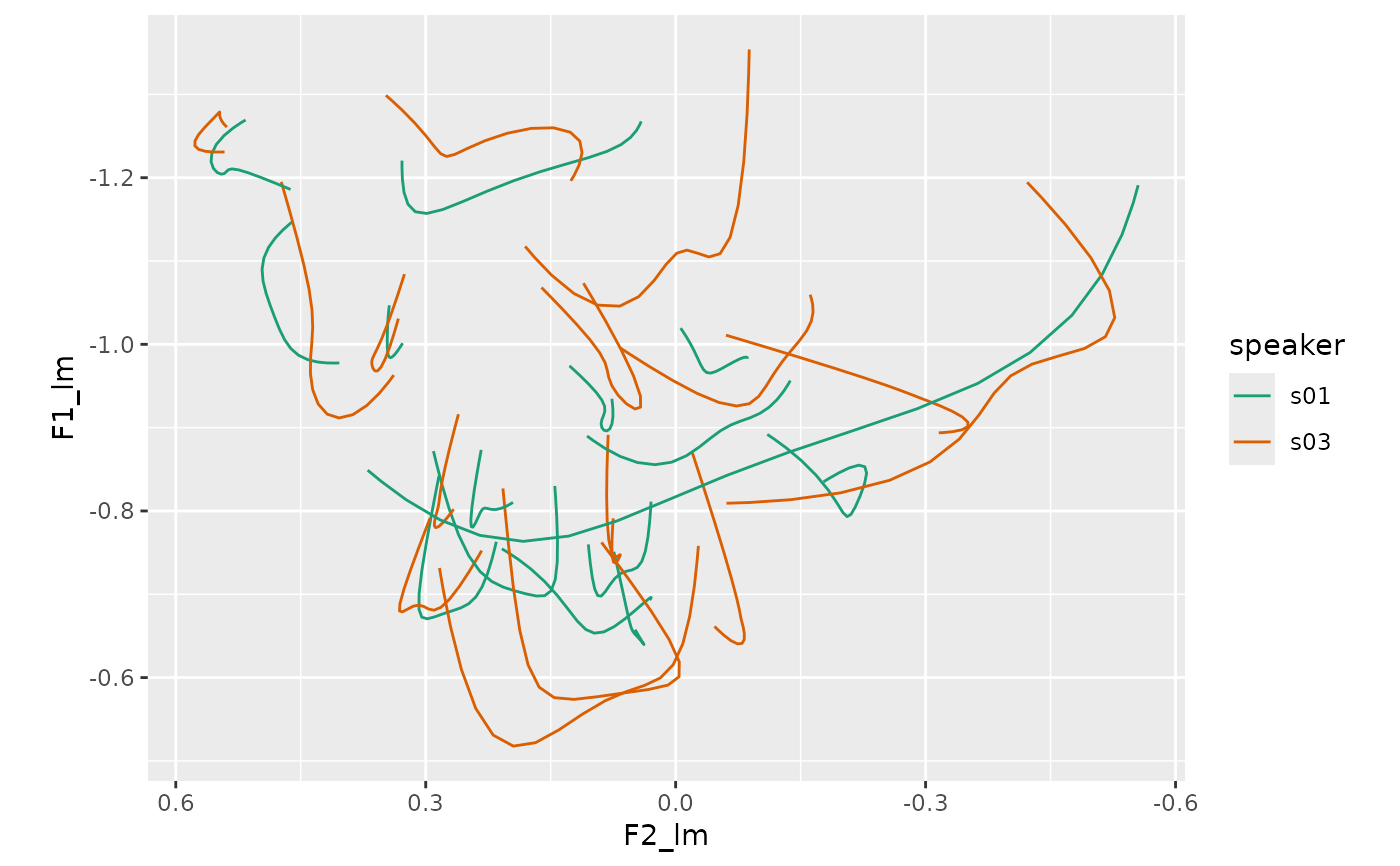Nearey DCT Normalization
Usage
norm_dct_nearey(
.data,
...,
.token_id_col,
.by = NULL,
.by_formant = FALSE,
.param_col = NULL,
.drop_orig = FALSE,
.names = "{.formant}_lm",
.silent = FALSE
)Arguments
- .data
A data frame containing vowel formant data
- ...
<tidy-select>One or more unquoted expressions separated by commas. These should target the vowel formant data columns.- .token_id_col
<data-masking>A column that identifies token ids.- .by
<tidy-select>A selection of columns to group by. Typically a column of speaker IDs.- .by_formant
Whether or not the normalization method is formant intrinsic.
- .param_col
A column identifying the DCT parameter number.
- .drop_orig
Should the originally targeted columns be dropped.
- .names
A
glue::glue()expression for naming the normalized data columns. The"{.formant}"portion corresponds to the name of the original formant columns.- .silent
Whether or not the informational message should be printed.
Details
Important: This function assumes that the DCT coefficients were estimated over log-transformed formant values.
When formant extrinsic: $$ \hat{F}_{ij} = \log(F_{ij}) - L $$ $$ L = \frac{1}{MN}\sum_{i=1}^M\sum_{j=1}^N \log(F_{ij}) $$
When formant intrinsic: $$ \hat{F}_{ij} = \log(F_{ij}) - L_{i} $$
$$ L_i = \frac{1}{N}\sum_{j=1}^{N}\log(F_{ij}) $$
Where
\(\hat{F}\) is the normalized formant
\(i\) is the formant number
\(j\) is the token number
References
Nearey, T. M. (1978). Phonetic Feature Systems for Vowels [Ph.D.]. University of Alberta.
Examples
library(tidynorm)
library(dplyr)
ggplot2_inst <- require(ggplot2)
speaker_dct <- speaker_tracks |>
mutate(
across(
F1:F3,
log
)
) |>
reframe_with_dct(
F1:F3,
.by = speaker,
.token_id_col = id,
.time_col = t
)
# Normalize DCT coefficients
speaker_dct_norm <- speaker_dct |>
norm_dct_nearey(
F1:F3,
.by = speaker,
.token_id_col = id,
.param_col = .param
)
#> Normalization info
#> • normalized with `tidynorm::norm_dct_nearey()`
#> • normalized `F1`, `F2`, and `F3`
#> • normalized values in `F1_lm`, `F2_lm`, and `F3_lm`
#> • token id column: `id`
#> • DCT parameter column: `.param`
#> • grouped by `speaker`
#> • within formant: FALSE
#> • (.formant - mean(.formant, na.rm = T))/(1/sqrt(2))
#>
# Apply average and apply inverse dct
# to plot tracks
track_norm_means <- speaker_dct_norm |>
summarise(
.by = c(speaker, vowel, .param),
across(
ends_with("_lm"),
mean
)
) |>
reframe_with_idct(
ends_with("_lm"),
.by = speaker,
.token_id_col = vowel,
.param_col = .param
)
if (ggplot2_inst) {
track_norm_means |>
ggplot(
aes(F2_lm, F1_lm, color = speaker)
) +
geom_path(
aes(
group = interaction(speaker, vowel)
)
) +
scale_x_reverse() +
scale_y_reverse() +
scale_color_brewer(palette = "Dark2") +
coord_fixed()
}

